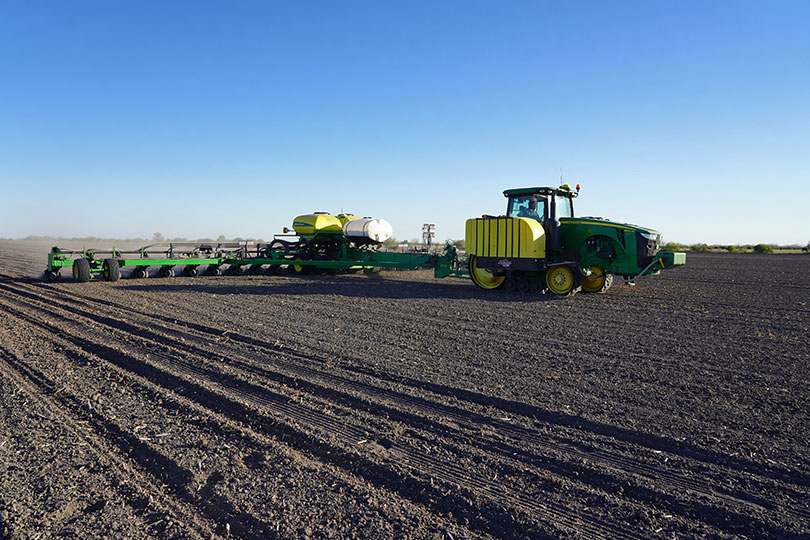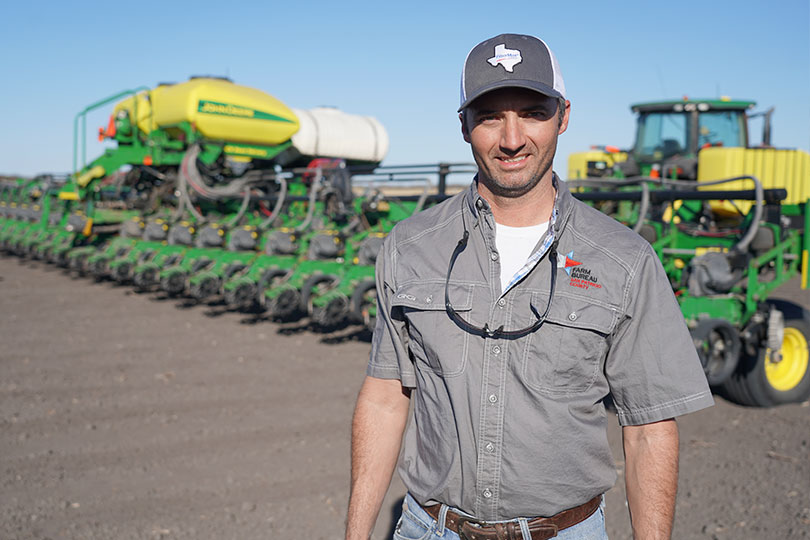By Jennifer Whitlock
Field Editor
Farmers across South Texas are hard at work planting the crops they hope provide bountiful harvests later this year, and San Patricio County Farm Bureau member Colin Chopelas is no exception.
In late March, the fifth-generation cotton, corn and sorghum farmer said he was just about done planting cotton after a delayed start due to February’s winter storms.
Although Chopelas didn’t get corn in the ground until the first week of March, the weather has warmed back up to normal ranges, and he felt as though he was caught up at the end of cotton planting.
“Hopefully, we won’t have any replants this year. We’ve put about 1,600 acres of cotton in the ground,” he said. “Moisture conditions have been pretty favorable this year, a little drier than we’d like to see it. But we’re putting cotton seed in wet dirt, and things are starting to come up and turn green in this area and looking really good.”
In farming, timing is vital. The region’s spring rainfall tends to peak in April and May, so planting seed prior to those rains is imperative to dryland crop quality.

For this Coastal Bend farm family, cotton is a major source of income.
“Growing cotton is always a major part of our crop portfolio. It’s usually the most acres we plant or close to the most acres, and it’s just the thing that year-in and year-out returns the most money on our farm. We’ve been fortunate to have some really good years the last few years, and our average per acre has increased,” he said.
But weather issues throughout the growing season can help or hurt the crop.
Drought, hurricanes, floods and other natural disasters have all occurred in San Patricio County, which stretches from the Gulf of Mexico to about 60 miles inland.
“We’re starting off in pretty good shape and have pretty good subsoil moisture, but we’re also coming off two of the best crops that we’ve ever had. That makes you a little nervous about what the third one’s going to be. It could either be another home run, or it could be a complete bust. But we’re trying our best,” Chopelas said.
And commodity prices are on the rise, buoying his hopes for an even better year than the previous two. Chopelas secured contracts for some of his cotton crop at “well above 80 cents” a pound, a significant increase from the 60- to 70 cent-per-pound average seen over the past three marketing years.
Sorghum and corn prices are higher, too, lending him a renewed sense of optimism as he completed planting season.
“My favorite part of farming is what we’re doing right now. It’s putting seed in the ground. It’s a fresh start, a new year. You have nothing but upside potential from here,” he said. “This crop, other than what Mother Nature may throw at you, is in your hands. You can manage it as well as you like to, and you really get to reap the benefits of what you put into it. There are a lot of dynamics that we can’t control, but the one thing we can control is coming out here and trying to grow a crop, and that’s what we’re going to do.”

